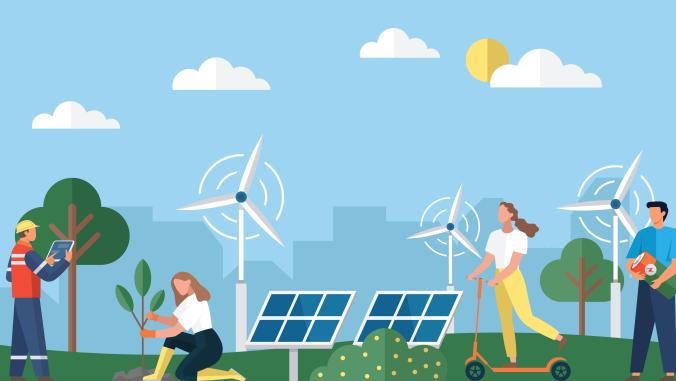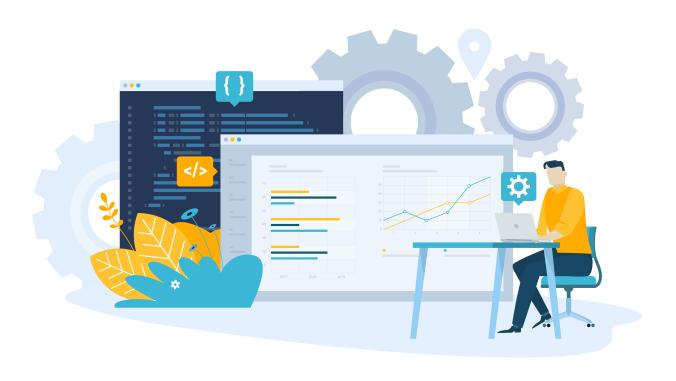The profession of corporate sustainability gets specific
CSR programs are turning out to be, well, sustainable — and it's showing.

The following is adapted from State of Green Business 2019, published by GreenBiz in partnership with S&P Global Trucost.
Corporate sustainability programs are turning out to be, well, sustainable. That won’t surprise readers of the biennial GreenBiz Group State of the Profession report. This year, we asked nearly 4,000 GreenBiz Intelligence Panel members whether their programs would continue on their current trajectory if the organization’s sustainability leader and CEO both left. Only 17 percent said their programs would not continue, while 58 percent said they would carry on and 25 percent didn’t know.
This strong belief in the resiliency of sustainability programs is reflected by the biggest change in the profession since we first began conducting this research — namely, the evolution from the early role of sustainability executives as generalists to an increasing demand for those with education and experience in everything from materials science and product design to purchasing and procurement, finance, accounting and more.
There will always be a leadership role for a centralized sustainability executive overseeing an ever-changing landscape of environmental and social challenges and opportunities. There’s no working yourself out of a job when it comes to sustainability, even though many sustainability executives state that as their ultimate objective. If anything, the sustainability leader’s role expands as the profession evolves from its tactical origins of reporting and stakeholder engagement to that of business strategy, change management and on-the-ground execution. Early on, these roles were established to manage risk; now they are there to harvest opportunity.We’re covering more bases now in sustainability because we’ve realized that the scope of sustainability is bigger than just environmental.
This is evident in our most recent survey, of respondents from companies with revenues greater than $1 billion, about whether their organization has one or more dedicated sustainability resources embedded in other parts of the organization. Historically, departments in corporate social responsibility (CSR) and environmental health and safety (EHS) have been aligned with sustainability efforts. The past few years have shown a marked increase in dedicated sustainability personnel in facilities and supply-chain departments. To gain greater insight and to learn where companies are increasing sustainability-related resources, we reached out to some leaders in the GreenBiz Executive Network, our member-based, peer-to-peer learning forum for sustainability professionals.

AT&T Director of Sustainability Operations John Schulz agrees. "We’re covering more bases now in sustainability because we’ve realized that the scope of sustainability is bigger than just environmental," he says. "It’s got social elements, it’s got customer and employee engagement elements, and more." As a result, his team has added people.
One development driving greater specialization is an increase in the specificity of goal setting. CDP asks large global corporations to measure and report carbon emissions along with supply chain, water and forest impacts. Measurement has become more target-oriented as companies set goals in alignment with the Science Based Targets initiative and others seek context-based targets for other environmental impacts, such as water. The growing relevance of the SDGs and calls for organizations to conduct scenario planning in accordance with the TCFD all seek to shine a brighter light on corporate commitments and how success will be measured.
Key players to watch
Arizona State University — offers one of the most wide-ranging offerings of graduate degrees and programs that incorporate a collaborative and transdisciplinary approach.
BlackRock — CEO Larry Fink’s annual letter for 2018 last year rocked the sustainability world in a good way and put CEOs on notice that the investment ;community is watching.
Global Reporting Initiative (GRI) — its Sustainability Reporting Standards are the most widely adopted global standards for sustainability reporting.
Responsible Business Alliance — one of the first coalitions to create an industry-wide standard on social, environmental and ethical issues in the supply chain.
United Nations — the 17 Sustainable Development Goals and 169 targets are providing a more specific platform for business to engage collaboratively with governments around the world.





